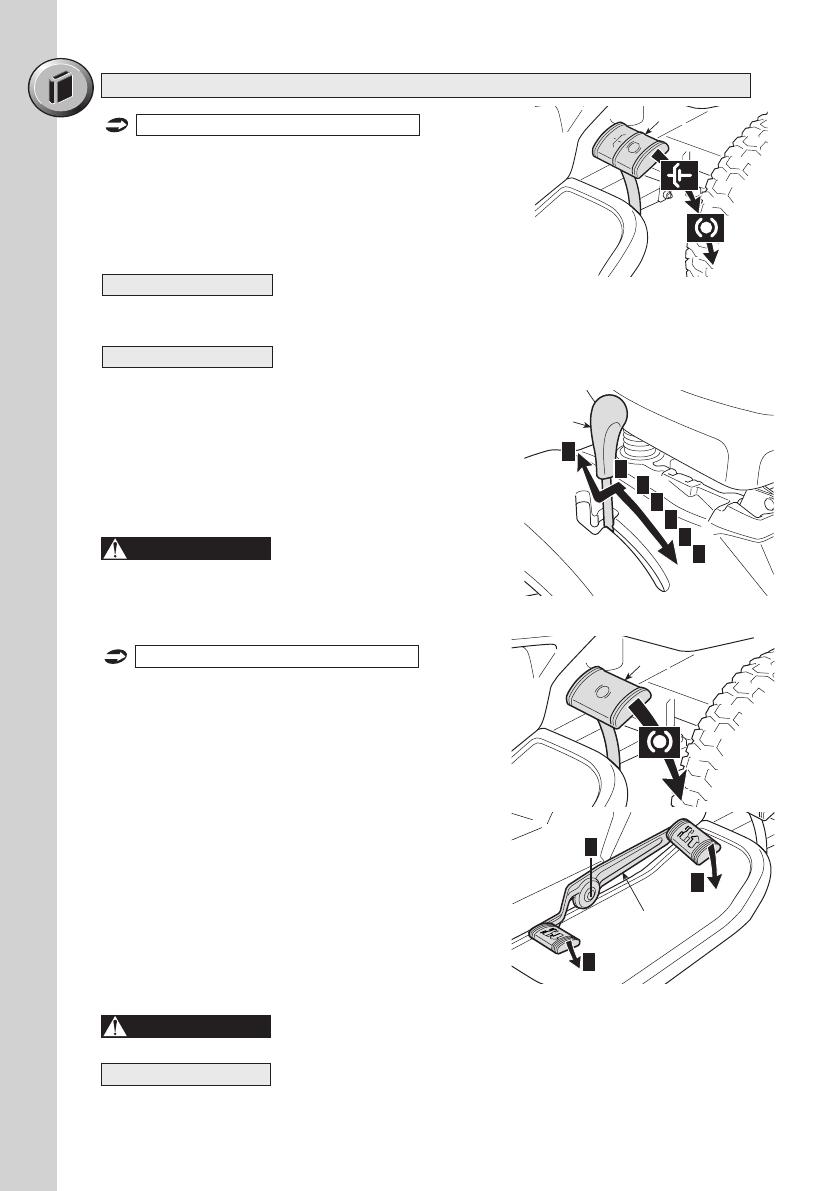
2
Dear Customer,
Thank you for having chosen one of our products.
We hope that you will get complete satisfaction
from using your new machine and that it will fully
meet all your expectations.
This manual has been written to help you become
familiar with the machine and use it safely and
efficiently. Do not forget that this manual is an
integral part of the machine, so keep it close at
hand for future reference and pass it on to the
purchaser if you sell the machine.
This new lawnmower has been designed & built in
compliance with international standards (Machinery
Directive 2006/42/CE), & is safe & reliable if used
for cutting grass following the instructions given in
this manual (proper usage). If you use the machine
in any other way or ignore the instructions for safe
use, maintenance and repair, it is considered
"incorrect usage" (
5.1). In this case, the
warranty is automatically voided & the Manufacturer
is not held responsible for damage or injury to
oneself or others.
Note that some models will progressively update in
compliance with new standard ISO 5395 & may
include additional features that will affect normal
usage.
INTRODUCTION
INTENDED USE
This machine was designed & built to cut grass.
The use of special accessories provided for by
the Manufacturer as original equipment or
which may be purchased separately, allows this
work to be done in various operating modes,
illustrated in this manual or the instructions that
accompany the single accessories.
Likewise, the intended use can be amplified to
include other functions by applying
supplementary tools (if provided for by the
Manufacturer), abiding by the restrictions &
conditions indicated in the instructions
accompanying the equipment.
IMPROPER USE
Any other usage not in keeping with the
abovementioned ones may be hazardous &
harm persons and/or damage things. Examples
of improper use may include, but are not limited
to:
– transporting people, children or animals on
the machine or on a trailer;
– towing or pushing loads without the use of
the specific accessory for towing;
– use of the machine for riding over unstable,
slippery, icy, stony, rough, marshy ground or
puddles that do not allow the consistency of
the ground to be assessed;
– use the blades on surfaces other than grass.
– use of the machine for leaf or debris
collection.
Improper use of the machine will invalidate the
warranty, relieve the Manufacturer from all
liabilities, and the user will consequently be
liable for all and any damage or injury to
himself or others.
AFTER-SALES SERVICE
This manual gives all the necessary instructions
for using the machine & carrying out basic
maintenance.
Any adjustments or maintenance operations
not described in this manual must be
carried out by your Dealer or a specialized
Service Centre. Both have the necessary
knowledge and equipment to ensure that
the work is done correctly without affecting
the safety of the machine.
If you wish, you can ask your dealer to prepare
a maintenance programme personalised to
your needs. This will help you keep your new
purchase in peak performance and maintain its
value over time.
To contact your closest Victa Authorised Service Centre, you will find the latest
Service Centre listing on the Victa website, www.victa.com.au or by contact
Victa Customer Service on 1800 356 632.
This may include limitations with regards
to reverse movement operations and can
be identified in the addition of the reverse
button (4.4) located on the dashboard of
some models.
Since we regularly improve our products, you may
find slight differences between your machine and
the descriptions contained in this manual.
Modifications can be made to the machine without
notice and without the obligation to update the
manual, although the essential safety and function
characteristics will remain unaltered. If in doubt, do
not hesitate to contact your dealer.
This machine is a garden tool & precisely a ride-on
mower.
The machine is equipped with an engine which
drives a cutting unit protected by a casing, as well
as a transmission unit that moves the machine.
The operator is able to operate the machine and
use the main controls, always seated in the
operator’s position.
The devices fitted on the machine stop the engine
and the cutting device within a few seconds, should
the operator behave in a manner that does not
comply with the necessary safety precautions.





















